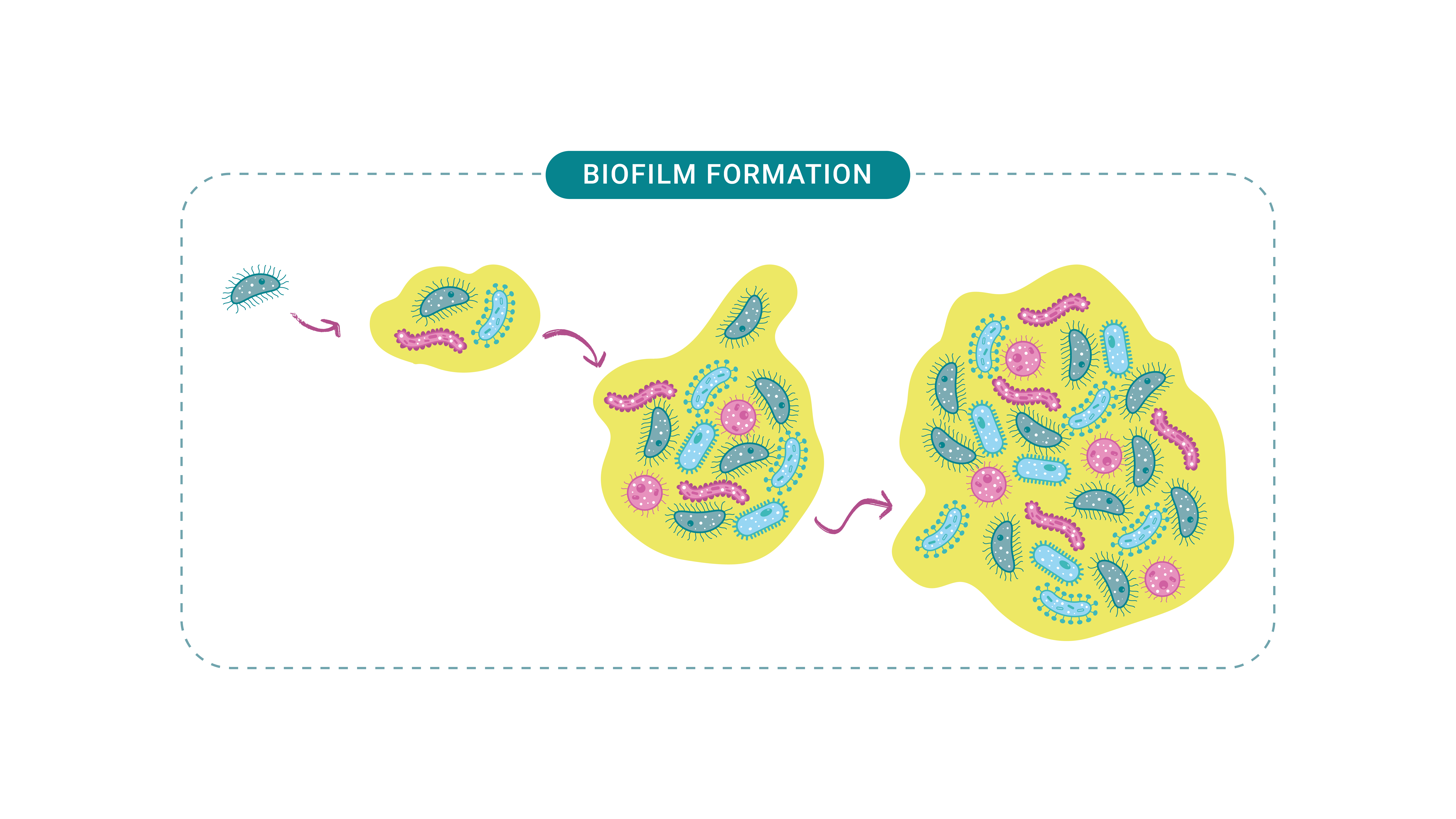
We start 2023 by going deeper into the solutions that LIFE RESEAU is allowing to be applied in both Moaña and Søndersø Water Waste Treatment Plants (WWTPs).
Today we want to talk about the Advanced Biofilm Reactors that are being designed to be integrated into the basins of both wastewater treatment plants. These reactors are expected to increase the capacity of the WWTPs by up to 600%, without the need for additional land and using the existing surface and infrastructure. In addition, energy consumption (we estimate up to 66%) and the associated CO2 and N2O emissions (up to 66% and 85% respectively) will be reduced. The freed-up area will be available for use as storage tanks, increasing the capacity and flexibility of the WWTPs.
But what are these biofilms we have been talking about? Biofilms are structured colonies of bacterial cells created by the bacteria themselves, which adhere to a surface, be it cells or tissues, as well as solid surfaces (floors, pipes, equipment, etc.). The formation of biofilms allows these cells to protect themselves from adverse environments and facilitates their survival. It is estimated that 80% of the terrestrial microbial biomass resides within biofilms and, in the health field, the presence of a biofilm is usually associated with the presence of infections. However, biofilm is extremely useful in the field of water treatment. Its main advantages are: higher nutrient removal per m3; higher treatment level during peak loads; less space required in the secondary settling tank and less sludge production. Implementing this type of system in WWTPs makes it possible to increase the amount of water treated in the same surface area, intensifying the reactors already used for initial wastewater treatment.
Two different technologies (Membrane Aerated Biofilm-MABR and Aerobic Granular Systems- AGS) have been included in the LIFE RESEAU solution increasing its flexibility and allowing a better adaptation to each WWTP. MABRs focus on upgrading WWTPs with limited aeration/nutrient removal capacity, while AGSs focus on WWTPs with limited hydraulic capacity. Their widespread application has not yet been achieved because, among other things, it is difficult to scale up the technology due to the complexity of the hydrodynamics, while the economic viability of the life cycle has yet to be demonstrated.
In this regard, LIFE RESEAU is a pioneering project, and all partners feel fortunate to be able to participate in improving sanitation infrastructures in Spain and Denmark and helping to establish innovative models that will make the WWTPs of the future more resilient and sustainable.

